 by our College Data Analytics Team
by our College Data Analytics TeamBelmont total enrollment is approximately 8,204 students. 6,330 are undergraduates and 1,196 are graduate students.
Male/Female Breakdown of Undergraduates
The full-time Belmont undergraduate population is made up of 66% women, and 34% men.
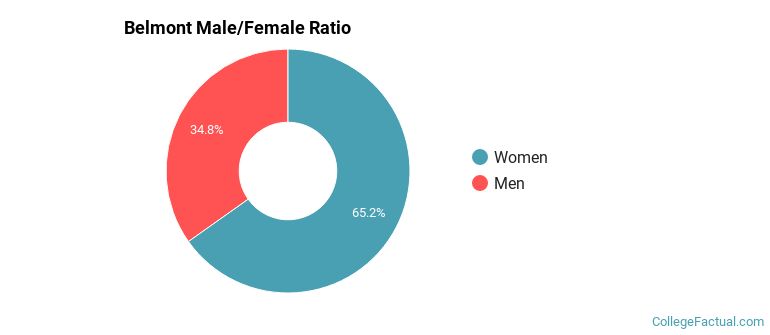
For the gender breakdown for all students, go here.
Belmont Racial/Ethnic Breakdown of Undergraduates
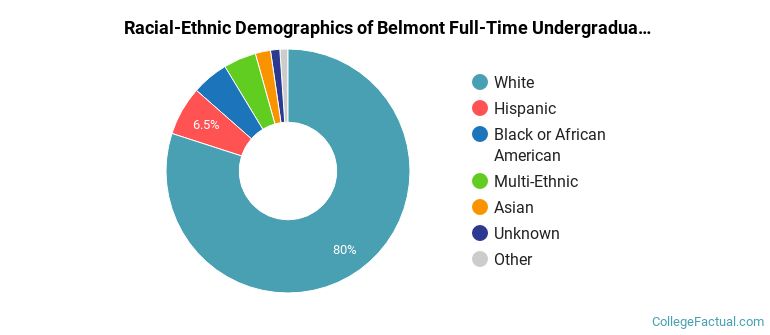
| Race/Ethnicity | Number |
|---|---|
| White | 5,014 |
| Hispanic | 440 |
| Black or African American | 315 |
| Multi-Ethnic | 260 |
| Asian | 149 |
| Unknown | 89 |
| International | 42 |
| Native Hawaiian or Pacific Islander | 8 |
See racial/ethnic breakdown for all students.
Male/Female Breakdown of Graduate Students
About 76% of full-time grad students are women, and 24% men.
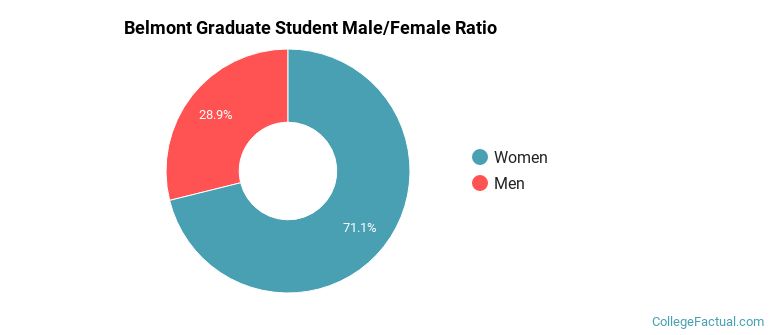
For the gender breakdown for all students, go here.
Belmont Racial-Ethnic Breakdown of Graduate Students
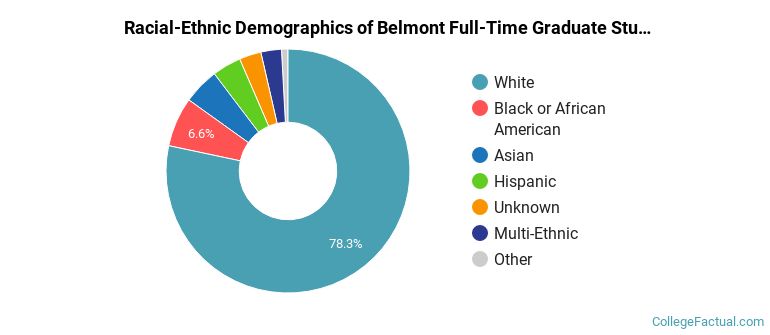
| Race/Ethnicity | Number |
|---|---|
| White | 936 |
| Black or African American | 65 |
| Hispanic | 60 |
| Asian | 57 |
| Multi-Ethnic | 34 |
| Unknown | 31 |
| International | 8 |
| Native Hawaiian or Pacific Islander | 1 |
See racial/ethnic breakdown for all students.
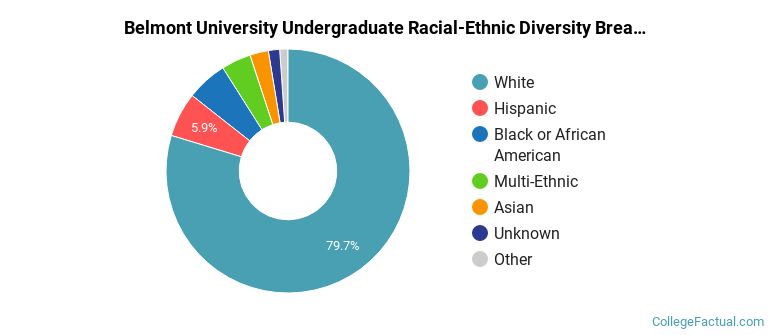
| Race/Ethnicity | Number |
|---|---|
| White | 6,476 |
| Hispanic | 536 |
| Black or African American | 433 |
| Multi-Ethnic | 309 |
| Asian | 223 |
| Unknown | 138 |
| International | 59 |
| Native Hawaiian or Pacific Islander | 9 |
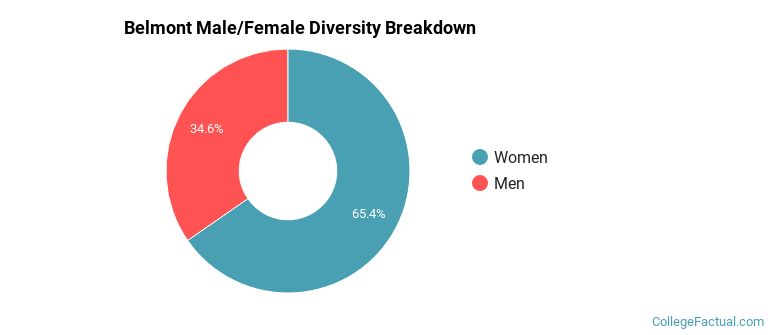
There are approximately 5,477 female students and 2,727 male students at Belmont.
Belmont ranks 69 out of 2,183 when it comes to geographic diversity.
77.01% of Belmont students come from out of state, and 0.57% come from out of the country.
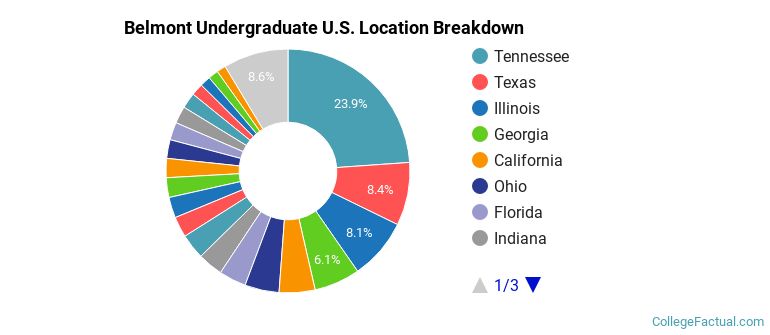
The undergraduate student body is split among 48 states (may include Washington D.C.). Click on the map for more detail.
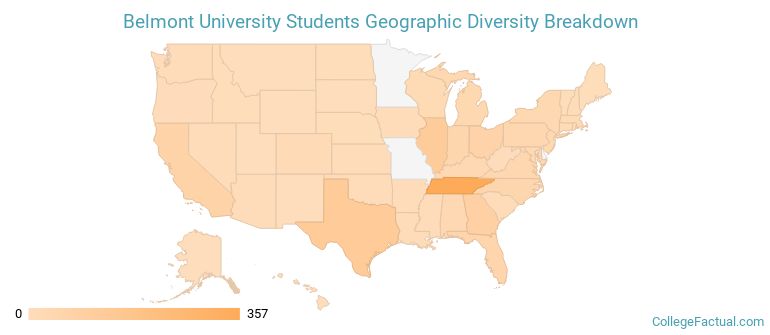
| State | Amount |
|---|---|
| Tennessee | 357 |
| Texas | 125 |
| Illinois | 121 |
| Georgia | 91 |
| California | 71 |
Students from 41 countries are represented at this school, with the majority of the international students coming from Canada, China, and Brazil.
Learn more about international students at Belmont.
A traditional college student is defined as being between the ages of 18-21. At Belmont, 66.54% of students fall into that category, compared to the national average of 60%.
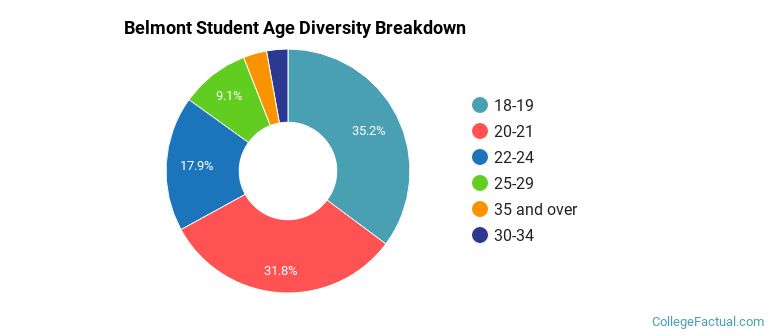
| Student Age Group | Amount |
|---|---|
| 18-19 | 2,799 |
| 20-21 | 2,532 |
| 22-24 | 1,424 |
| 25-29 | 727 |
| 35 and over | 247 |
| 30-34 | 225 |
| Under 18 | 0 |
Footnotes
*The racial-ethnic minorities count is calculated by taking the total number of students and subtracting white students, international students, and students whose race/ethnicity was unknown. This number is then divided by the total number of students at the school to obtain the racial-ethnic minorities percentage.
References
Department of Homeland Security Citizenship and Immigration Services
Read College Factual's Diversity Ranking Methodology.